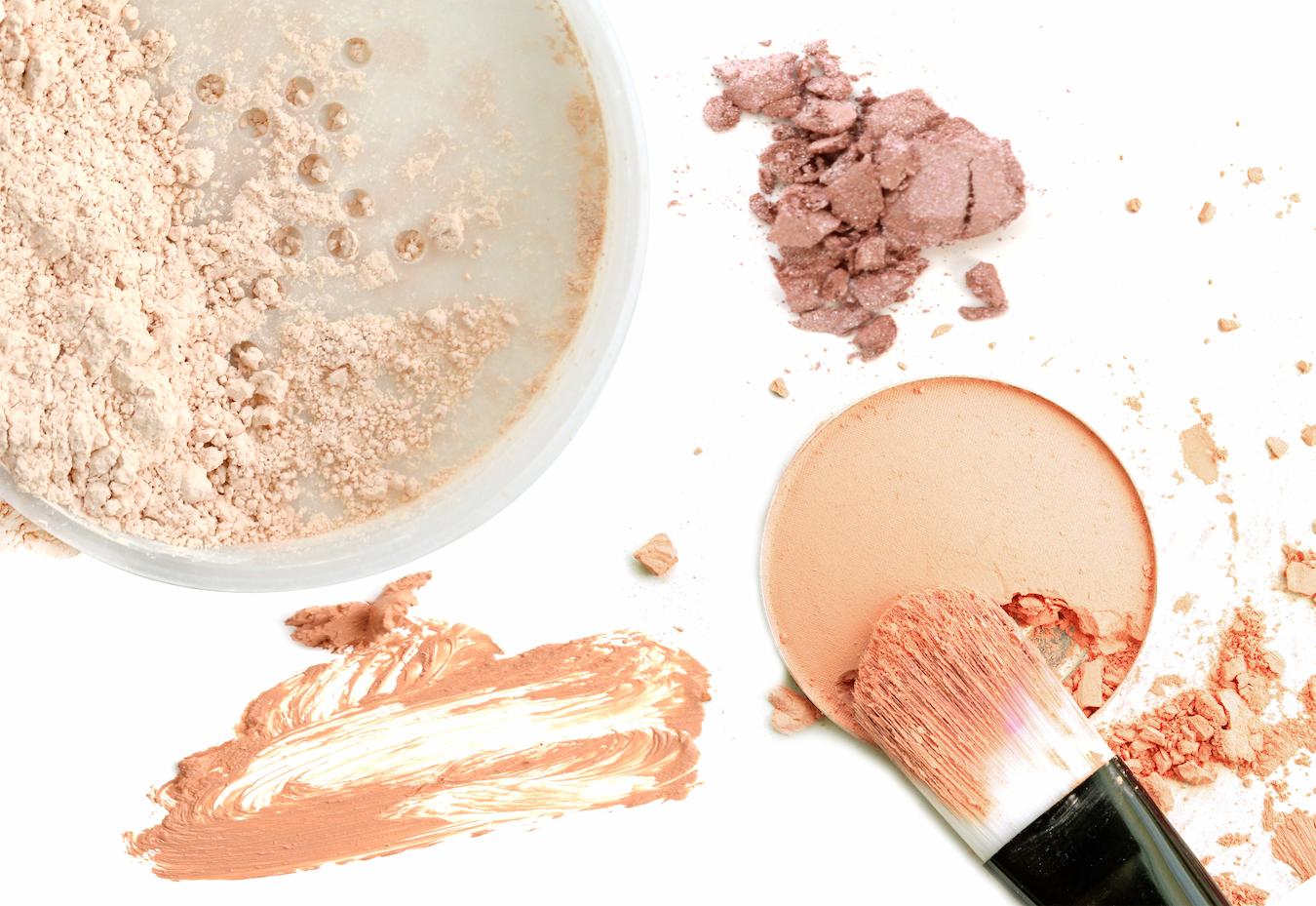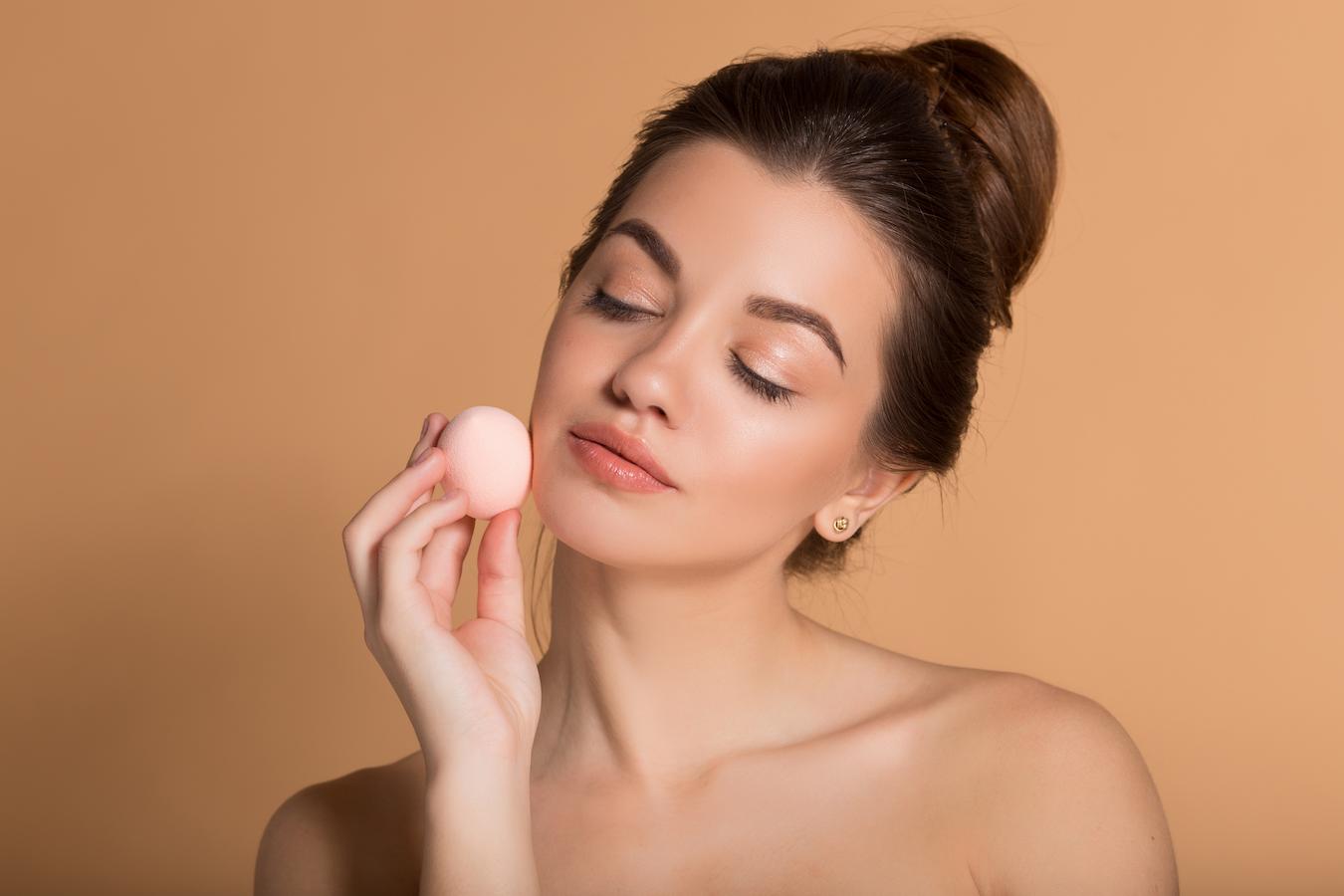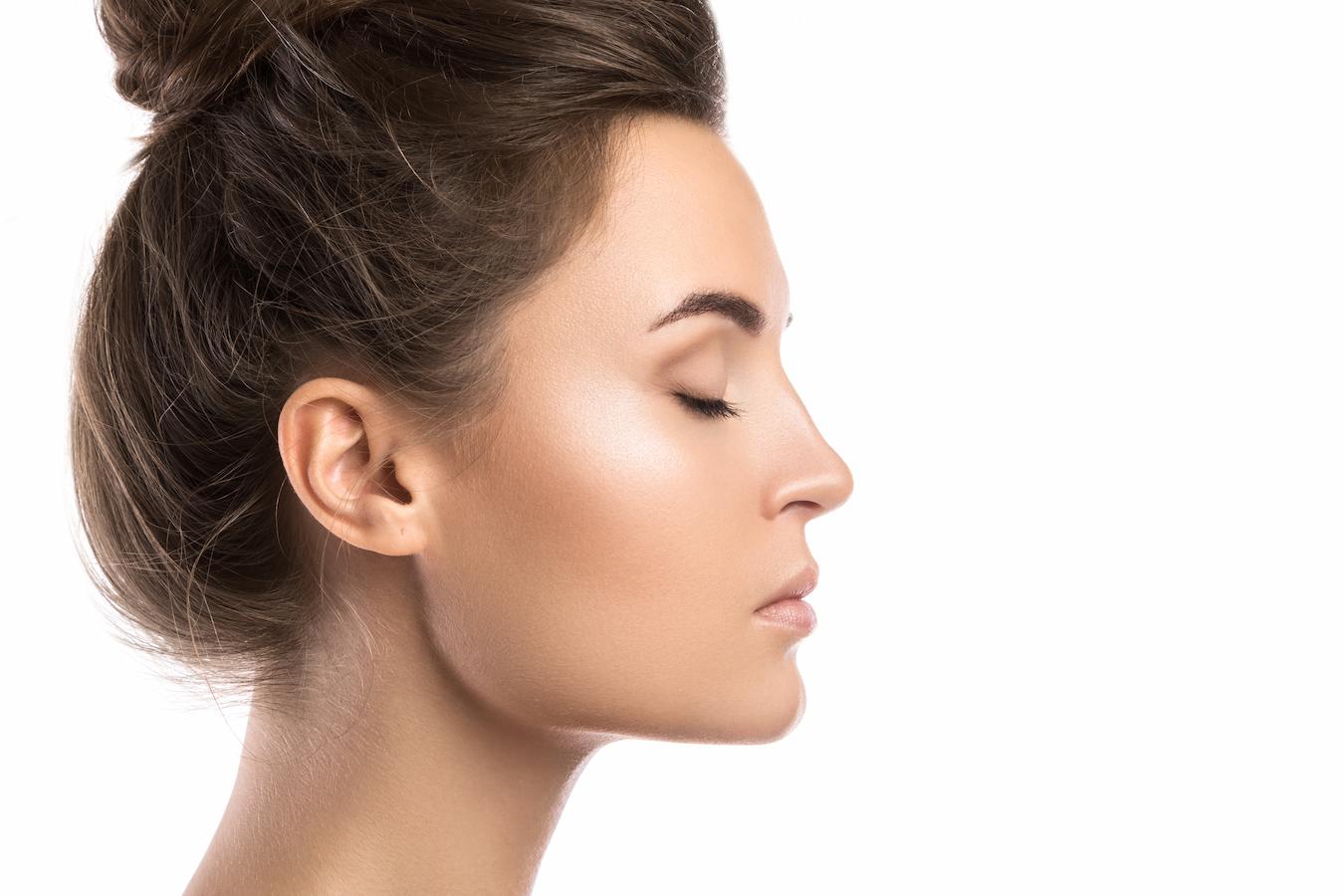What is Mineral Foundation?
The Ultimate Guide to Mineral Makeup
Mineral foundation has been getting quite a bit of buzz lately, but what does it really mean? How does it differ from the liquid foundation, or most makeup we’re all familiar with? And should you try using mineral foundation to change up your makeup routine?
To answer these questions and more, read on for our ultimate guide to mineral powder foundation and its many uses and benefits.
A mineral foundation is a powder-based cosmetic that has natural ingredients such as talc, kaolin, titanium dioxide, and zinc oxide. Many makeup artists recommend mineral foundations for their skincare benefits.
It’s perfect for sensitive skin and for acne prone skin. A mineral foundation is perfect for those with oily skin because it will absorb excess oil without having a negative effect on your complexion. If you’re looking for an alternative to conventional makeup that is often packed with chemicals, then mineral powder foundation might be right for you.
Mineral cosmetics have a lot of diversity. Not only do they have a wide shade range, and work with all skin types, they also come in different finishes such as matte, natural or dewy so it’s important to understand what they mean before you begin your search.
See Related: When To Use A Facial Steamer
Matte
Many people prefer matte-finish mineral makeup because it tends to look more natural than a dewy or creamy finish. Matte foundations are especially ideal for oily skin, since they tend not to produce shine, but note that even matte foundations can be dewy if they don’t contain emollients.
This is why it’s important that you choose a formula that has a good amount of moisturizing ingredients like glycerin and jojoba oil; while these ingredients won’t make your foundation shiny, they will give it a smooth, soft feel and help create an airbrushed appearance. On dry complexions, matte foundations offer buildable coverage to help control shine without making skin look dull or flat.
- To balance things out, try using a hydrating primer or AHA serum underneath your foundation before applying concealer in order to make everything look more radiant. This step is beneficial for any skin type.
- To ensure that you don’t produce excess oil during your day (or evening), pair matte mineral powder foundation designed for oily skin—these powders can help blot moisture from your face before it reaches pore-producing levels.
- If you have sensitive skin, look for fragrance-free and cruelty-free mineral powder foundation.
To keep everything looking fresh throughout the day, avoid powder formulas with ultra-absorbent ingredients like kaolin and magnesium carbonate, which trap excess oils on your face rather than absorbing them. Instead, opt for sheer formulas loaded with nourishing ingredients like vitamin E and algae extract in order to lock in hydration for longer periods of time.
Natural
While there’s a lot of buzz surrounding mineral makeup, you might be wondering if it’s actually “natural.” The short answer is yes. Natural here refers to mineral products that don’t include synthetic chemicals, like dyes and fragrances.
Instead, minerals are ground down into an ultra-fine powder, which gives them their distinctive coverage and natural finish; these particles then bond with oxygen as they sit on your skin. So while the concept of natural makeup might not seem logical, it actually is!

Minerals also contain nourishing, active ingredients like zinc oxide and iron oxide for color, titanium dioxide for UV protection, and kaolin clay for absorbing excess oil.
To ensure you’re getting mineral makeup that’s natural without sacrificing any benefits, make sure to read labels of all of your makeup brands—look for a product that uses only natural ingredients, and fragrance-free (meaning no synthetic dyes or fragrances) and doesn’t contain talc or parabens (ingredients used in conventional cosmetics).
Furthermore, before purchasing any product containing titanium dioxide or zinc oxide you want to look at its SPF level—this will tell you how effective it will be as sun protection. You want to ensure the mineral powder foundation you apply contains broad spectrum SPF. Aim for mineral cosmetics that have a minimum of SPF 15.
Dewy
Some foundations will dry into a soft, powdery finish, which can be beautiful and create a luminous finish. A dewy finish offers a lit-from-within glow without looking greasy or oily.
For best results, choose a foundation that is labeled “dewy.” You can also look for products with ingredients like hyaluronic acid, sea salt and algae extract, which are all great for keeping your skin looking supple, hydrated and giving it a healthy radiance.

Keep in mind that just because your foundation is labeled “dewy” doesn’t mean it’s going to have a natural-looking finish on all skin types—but it’s worth checking out! Your skin is unique, and mineral products simply enhance your natural beauty. Experimenting with different products can help you find one that looks and feels great on your unique skin. Depending on what shade range and look you’re going for, you may want more buildable coverage. This is where mineral foundations shine:
Choosing between loose and pressed powder formulas depends mostly on how much time and money you want to spend getting ready each day. Both offer buildable, customizable coverage that lasts, but there are some differences between them.
Loose powders tend to be more pigmented than pressed powders, so they’re great for adding a lot of coverage or color correction at once. It’s also easy to mix two shades together for just a little extra definition—or for making your own custom shade!
However, if you prefer something less intense and you don’t want to make your own formula from scratch every morning, then a pressed mineral foundation may be best. Pressed foundations offer a range of shades that makes it easier to find one that matches your skin tone exactly. They can also have better oil control than most liquid foundations because minerals tend not to clog pores as much as other ingredients do.
Bonus: How To Use Glycolic Acid
Getting The Best Application From Your Minerals
Most people think applying mineral makeup requires high levels of skill but with these tips, you can achieve professional-level results at home! Even though there are many ways in which you can apply your mineral foundation, these steps will provide flawless coverage every time:
- Wash your face with a gentle water-based cleanser and pat it dry with a towel. It’s important to make sure your skin is completely clean and dry before applying any makeup.
- Also make sure that whatever you use to remove oil from your face is completely removed as well. This will prevent a cakey texture from forming on top of your makeup throughout the day. You’ll want your skin to look its most natural before applying any type of base.
- If you are using liquid mineral cosmetics, make sure you shake your products well before using them, otherwise, they may cause discoloration in places.
- Once you’ve applied one layer of powder, wait for about 20 minutes for it to dry before applying another layer over the top so that it doesn’t show up caked-on or creased.
- Apply your foundation with a damp makeup sponge rather than a brush if you have oily skin as it will provide fuller coverage without clogging your pores. A sponge also absorbs excess oil from your face because of its rough texture which will help keep shine at bay throughout your day!
- Once you’ve applied your mineral powder foundation, let it sit for two minutes before applying any other products over top like blush or bronzer so that they don’t sink into any lines within your facial contours. It’s best not to apply too much blush. You’ll end up looking flushed rather than having a natural glow.
Mineral foundations are great for controlling oil on your face because of their matte properties; however, if you have an oily complexion and want even more control over shine throughout your day then lightly mist yourself with a setting spray immediately after applying foundation and then going about your day!
Choosing the Right Minerals
There are many different types of minerals available on today’s market and it can sometimes be hard to find which one is right for your skin type. The type of skin you have will determine what minerals will be best for you.

Oily complexions work best with dry and mica-rich foundations, which help absorb excess oil. Normal skin tones will look best in all-natural or oil-free powders that are also rich in mica. And, if you have sensitive skin that has trouble tolerating mineral makeup, go for hypoallergenic powder products. These minerals contain lower levels of naturally occurring elements that may cause sensitivity in some people; they are designed specifically for those with skin allergies or sensitivities (which is more common than you might think).
Always read product labels carefully before choosing a new foundation. There are many different kinds of makeup out there. Be sure it’s right for your complexion.
Why Is It Good for Your Skin?
It’s natural, so you won’t be getting all of those harmful chemicals that are found in regular foundations. Besides being good for your skin, it will also help keep your skin smooth and youthful as blurs pores as well.
Mineral powder foundation can give your face a bit more definition; many people like using it on their cheekbones as a way to highlight them without actually having to use any makeup at all! If you apply it correctly, then mineral foundation can last all day long without smudging or fading away.
Make sure that when you’re applying it that you’re blending well and not leaving streaks in your skin. If there are streaks present, then take some time and make sure they are properly blended out before continuing to wear it throughout the day.
Common Mistakes When Applying Mineral Foundation
Before you can begin applying mineral foundation, it’s essential that you have a good skincare routine and your skin has a healthy condition. If you have any dry spots or blemishes, use the proper products to treat and cover them before applying mineral foundation. When layering makeup, make sure each layer of mineral makeup is thin and uniformed so that there are no clumps or uneven surfaces.
One common mistake is applying too much at once. You will want to start with a light amount of powder for your entire face including the sides of your nose, chin, and cheekbones. Once you have achieved even coverage, you can apply more mineral foundation or add another layer if needed. Make sure that no parts of your skin are showing through as it is hard to cover bare spots once a mineral foundation has been applied on top of it.

Another common mistake when applying mineral foundation is not letting it set and dry before applying blush, bronzer, or highlighter over it. Allow all layers to set properly before applying additional products so they blend together smoothly and don’t stick in one place due to excessive rubbing from hands or brushes.
If too much pressure is applied when blending additional products over mineral foundation, there is a chance some could go on unevenly or look red and blotchy which can ruin an entire makeup look if not dealt with properly immediately after application.
What Time of Day Should I Use Mineral Foundation?
When it comes to using mineral foundation, you might be wondering what time of day is best. There’s really no set time of day to use mineral foundation. Whenever you feel like putting on your makeup is the best time!
How Often Should I Use Mineral Foundation?
There is no set rule when it comes to how often you should use mineral foundation. Ideally, you should use it after cleansing and before moisturizing your face with the best hyaluronic acid moisturizer. Of course, if you don’t want or can’t wear makeup in certain situations, it isn’t always necessary to apply mineral foundation every day. Just remember that your skin needs to be cleaned, hydrated and have daily sunscreen protection, so find an appropriate product that can satisfy those needs when you don’t have time for makeup.
We hope you found this guide helpful and that you learned something new about mineral cosmetics. Get out there budding makeup artist, and create your own mineral cosmetic masterpiece!
Keep Reading: How To Use Hyaluronic Acid
—
For over 60 years, Viviane Woodard has represented “The Purity of Skincare”. We are the leading beauty brand for skin care products and promote the importance of good skin hydration. Follow us on Facebook, Instagram, Twitter, and Pinterest for skin care tips, product discounts, and more.

